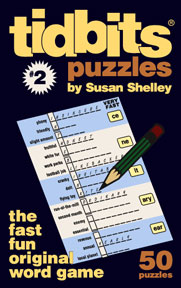"Are you now or have you ever been a member of the Federalist Society?"
The president's first Supreme Court nominee refused to explain today why he was listed in a leadership directory of the Federalist Society. Earlier, when news reports said John Roberts had been a member of the conservative legal group, he said he had no recollection of ever having belonged to the Federalist Society and the news outlets were forced to publish corrections.
Today, the White House repeated the earlier story that Judge Roberts has no recollection of belonging to the group.
Here we have, in a single snapshot, the entire 360-degree landscape of the judicial confirmation problem: Nominees who would interpret the Constitution refuse to tell the American people their true views about constitutional interpretation. Usually they just refuse to answer a straightforward question. This is a little more comical.
How can an ambitious man who has spent his life burnishing his resume "not recall" if he was a member of one of the best conservative legal networking groups in the country?
Okay, so it's a lie. He doesn't want the American people to know that he joined the Federalist Society.
What does it mean to be a member of the Federalist Society?
It means Judge John Roberts believes the Constitution should be interpreted to mean what the people who ratified it intended it to mean, and not what a majority of judges decides is the best meaning to appropriately address the current problems of American society.
Of course, there will be exceptions.
The people who ratified the Fourteenth Amendment, for example, intended it to leave racial segregation in place. They were very specific about that. They were horrified at the idea that the Civil Rights Bill of 1866, which the 39th Congress was writing at the same time they were writing the Fourteenth Amendment, might be interpreted by the courts to abolish segregated schools in their own Northern states. They even removed some language from the bill that said "there shall be no discrimination in civil rights or immunities among the inhabitants of any State or Territory of the United States on account of race, color, or previous condition of slavery."
That's right, the 39th Congress cut that language out of the bill. It was a deal-breaker.
So a judge who truly wants to interpret the Constitution according to original intent would be forced to vote to overturn Brown v. Board of Education, the unanimous 1954 Supreme Court ruling that looked the other way from historical precedent and forced the states to desegregate their schools.
Obviously, that's not going to happen. Brown v. Board of Education would be an exception to the rule of original-intent interpretation.
Perhaps Roe v. Wade would be an exception, too.
Perhaps the list of exceptions would include all the Supreme Court rulings that require the states to provide jury trials and Miranda warnings and defense attorneys and the rest of the protections in the Bill of Rights that the authors of the Constitution intended to apply only to the federal government.
Probably it would. The list of exceptions would be very long. If it's long enough to include Lawrence v. Texas, the recent ruling striking down a state ban on homosexual sodomy, then Justice Roberts would probably be awarded the honorary title, Another Souter.
Original-intent interpretation would be the most popular idea in America if the American people amended the Constitution so that it actually said what the majority of the country thinks it should say. Instead, we've allowed the Supreme Court to interpret civil rights and women's rights and privacy rights and defendants' rights and freedom of speech and everything else into the Constitution for us. And now we're in this precarious situation where original-intent constitutionalists can interpret them right out again.
Our rights should not be exceptions to the Constitution, they should be amendments to the Constitution. Pick up The 37th Amendment from Amazon.com and find out -- in the fast-moving form of a novel set in the year 2056 -- how far off the track we've jumped and how we can get our government back on the rails.
Copyright 2005
Complete source notes can be found in the appendix to The 37th Amendment, "How the First Amendment Came to Protect Topless Dancing."
.




0 Comments:
Post a Comment
<< Home